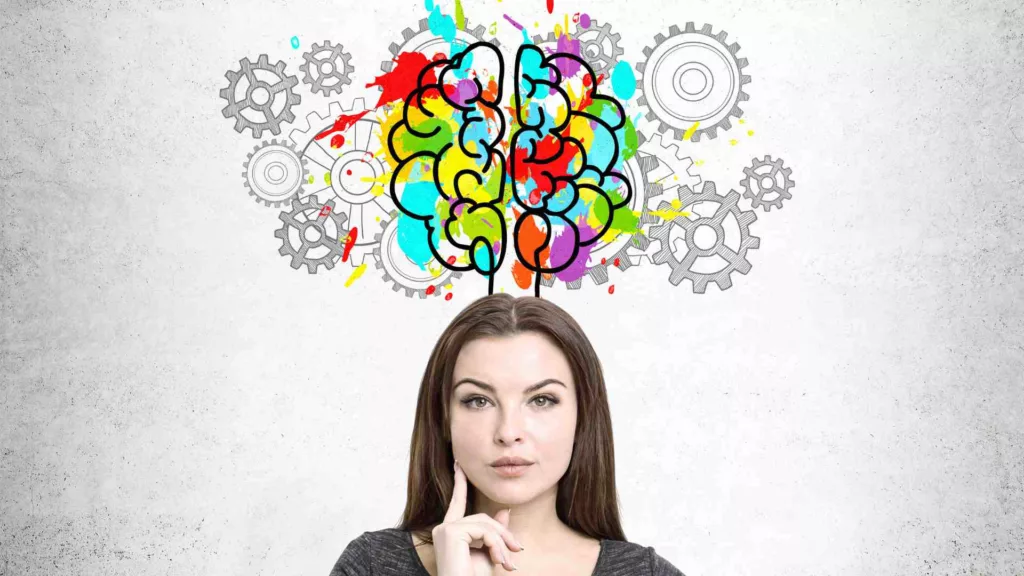Posted in Blog by Jo North
Boost Your Brainpower with Whole-brain Thinking
Unleashing Your Brain’s Full Potential: A Whole-Brain Thinking Approach
Ever found yourself wishing for more hours in a day or extra days in a week to conquer the ever-growing pile of challenges at work? You’re not alone. Today’s leaders often grapple with balancing innovation and maintaining daily business operations, leading to frustrations and a nagging feeling of under-utilization. We strive for more, often with limited resources at hand, which calls for a new approach to effectively use the potential at our disposal.
The Underutilized Power of the Human Brain
The Smartphone Analogy
Consider this: according to Statista, as of 2022, smartphone owners used an estimated 6.5 billion smartphone subscriptions, which is expected to climb to almost eight billion by 2028.. Yet, many of us barely scratch the surface of the functionalities our smartphones offer. Imagine if we tapped into just an additional 5 or 10% of our devices’ capabilities. The efficiency, productivity, and creative problem-solving improvements could be phenomenal.
Similarly, our brains hold vast untapped potential. We often under-utilize them because we opt for familiar methods and routines, both at home and at work. The key to change lies in exploiting the full range of our mental capabilities.
Untapped Power of the Human Brain: Insights from Research
Groundbreaking research in neuroscience continues to unveil our brain’s remarkable untapped potential. Take for instance, the classic research study done by Maguire et al. (2000), where London taxi drivers were found to have a larger posterior hippocampus, a brain area associated with navigation in birds and animals, compared to bus drivers. This study highlighted the brain’s ability to restructure and adapt, even in adulthood, based on our experiences and learning. It suggests a significant reservoir of mental potential awaiting use.
This research serves as a potent reminder that we can indeed maximize our brain’s capacity by challenging ourselves to step outside our cognitive comfort zones.
Herrmann Brain Dominance Instrument (HBDI) and the Whole Brain Model
Ned Herrmann, the creator of the Herrmann Brain Dominance Instrument (HBDI), proposed the whole brain model. He divided the human brain into four distinct quadrants, each representing different thinking preferences.
- Blue Quadrant: Reflecting the left brain, it represents logical, analytical, and quantitative data processing.
- Green Quadrant: Also in the left hemisphere, this quadrant symbolizes sequential thinking and the rational side of the brain, being associated with the safekeeping self.
- Yellow Quadrant: Residing in the right brain, it is associated with the experimental self. It captures the creative, conceptual, and holistic big-picture thinking.
- Red Quadrant: Symbolizing the limbic system or the emotional side of the brain, this quadrant encompasses emotional experiences, interpersonal connections, and intuitive reasoning.
These quadrants are metaphoric models of the brain functions and different thinking preferences. Each quadrant is equally important and contributes to the comprehensive whole-brain thinking model.
Implementing the Whole Brain Approach in Business
Understanding different thinking styles is crucial to maximize cognitive diversity in teams. Recognizing the thinking styles of others fosters better group dynamics, enhances management teams’ abilities, and allows for effective adaptation to real challenges.
For instance, a green dominant thinker might excel in systematic tasks, while a yellow quadrant thinker might thrive in creative scenarios. This understanding tailors messages for the target audience, ensuring more effective communication.
Practical Applications of the Whole Brain Model
Best practices recommend a balanced team profile incorporating various types of thinkers. For instance, right brain thinkers bring in fresh, innovative ideas, while left-brain individuals ensure practical execution. The whole-brain thinking model encourages a new perspective on problem-solving, promoting a blend of creative and rational thinking.
In terms of its application, human resources can use the HBDI profile for personality assessment, helping to create teams that reflect a balance of thinking styles and enhance team effectiveness. Understanding the dominant characteristics of team members can be incredibly valuable in task allocation, project management, and conflict resolution.
Harnessing Our Brain’s Full Potential
The Concept of Brain Plasticity
Advancements in brain research have debunked the long-held belief that our cognitive capabilities are set in stone. We now know our brains exhibit plasticity, meaning they can develop and change throughout our lives. This plasticity allows us to form new neuronal connections and enhance our brainpower by exposing ourselves to different experiences, environments, and challenges.
However, the hustle and bustle of daily life often result in us defaulting to well-trodden paths, using the same tried and tested approaches. This reliance on familiar patterns can inhibit us from fully leveraging our cognitive potential.
Mindset: Fixed vs. Growth
As highlighted by psychologist Carol Dweck, mindset plays a pivotal role in our personal and professional success. Individuals with a ‘fixed’ mindset tend to avoid risks for fear of failure, which can lead to stagnation. On the contrary, those with a ‘growth’ mindset embrace new experiences and see failures as stepping stones towards their goals.
To fully harness our brain’s potential, we need to foster a growth mindset. This mindset enables us to see challenges as learning opportunities, encouraging us to try fresh approaches and, ultimately, facilitate our personal and professional growth.
The Power of Whole-Brain Thinking
By consciously applying the whole-brain model, we can cultivate a growth mindset, encouraging both the analytical and creative sides of our brain to work in harmony. This approach, coupled with an eagerness to explore fresh experiences and forge new neural connections, can significantly boost our brainpower.
Imagine leveraging more of our cognitive potential each day, using our growth mindset to seek out new experiences and build new connections. We could unlock a multitude of novel possibilities, combining our creativity and logic to maximize these opportunities and break new ground.
By Dr. Jo North, the editor of this blog and Managing Director of The Big Bang Partnership Limited.

Difficult People Don’t Exist (very often!)
March 3, 2017

Look up at the stars…
February 17, 2017

Head Stretch – with left-handed mirror writing
February 4, 2017
Get in Touch
Please fill in our online contact form to get started today!

